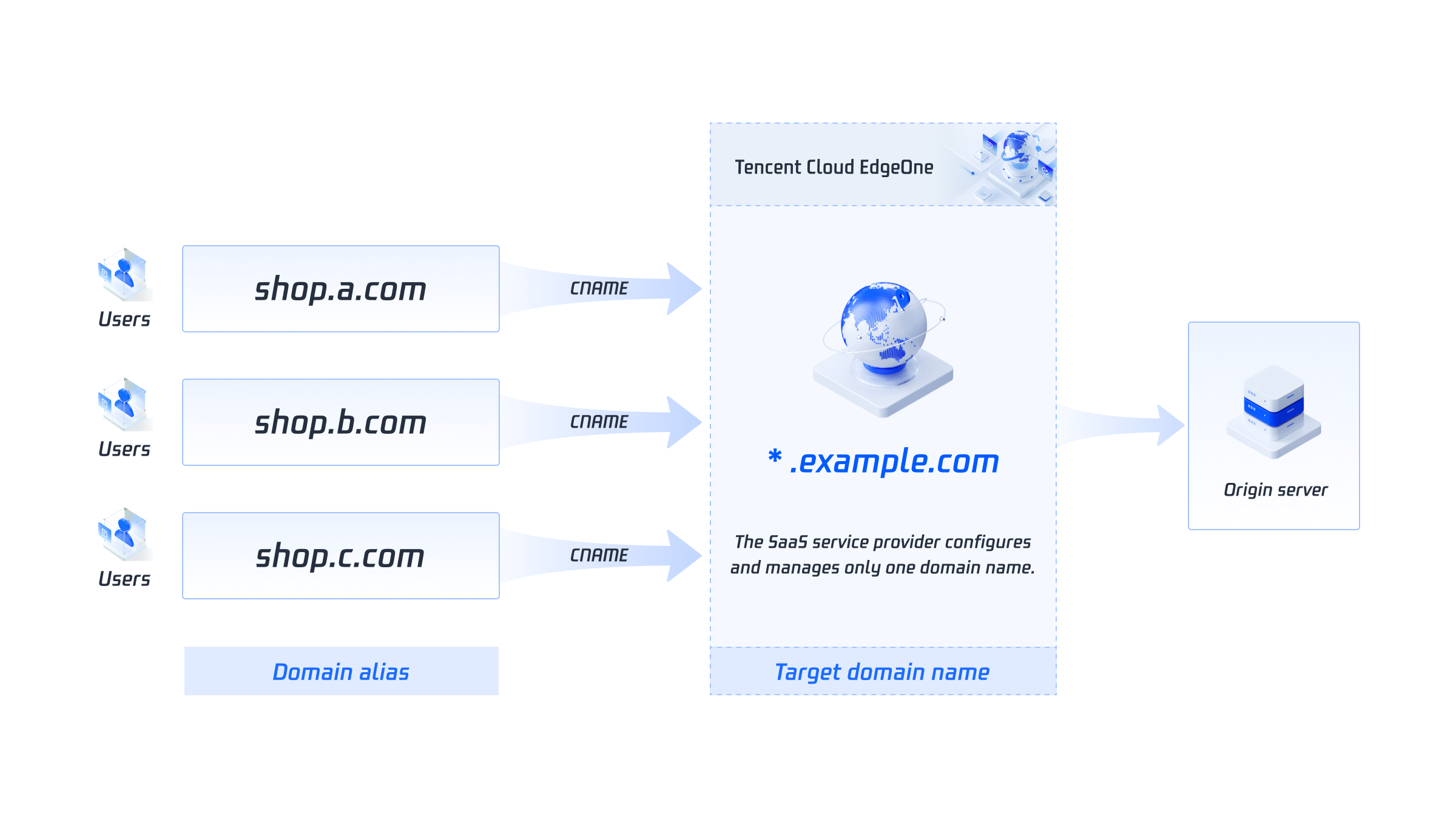概述
如果您当前具有大量的域名需要接入安全加速服务,且它们的配置完全相同,当需要新增、修改配置时,需要为每个域名进行配置下发、验证,并维护各域名的 HTTPS 证书,将为您带来繁重且重复的域名工作。
EdgeOne 别称域名可将单个域名的 EdgeOne 的安全加速能力批量复制到其他所有域名中,您只需少量的配置即可完成同类域名的快速接入。同时,EdgeOne 支持证书的申请和自动更新,可免去购买和维护证书的成本,帮助您极大程度上减轻域名的运维压力。
说明:
该功能仅企业版套餐支持,并且该功能当前仍在内测中,如需使用,请联系商务开启白名单使用。
原理介绍


如上图所示,目标域名用于管理当前的域名配置,别称域名通过 CNAME 的方式将域名解析指向目标域名,用户在访问别称域名时,将解析至目标域名,即该域名最终访问至 EdgeOne 时,访问将按照目标域名的规则配置生效。如果多个别称域名均指向同一个目标域名,其配置也会与目标域名保持完全一致。
适用场景
场景1-SaaS 建站:SaaS 建站服务商存在大量配置相同的域名,期望能够将全部域名快速接入安全加速服务,并能便捷同步所有域名配置并保持一致。
场景2-业务容灾:用户的站点需要准备多个备用域名作为容灾,多个备用域名需要保持配置一致,当域名解析出现异常时可启用备用域名服务。
场景价值
便捷运维:大幅度降低运维工作量,仅需维护一个域名配置,即可保证多个域名配置同步生效。
快速接入:只需要简单的操作即可完成大量域名的接入,操作简单,下发快速。